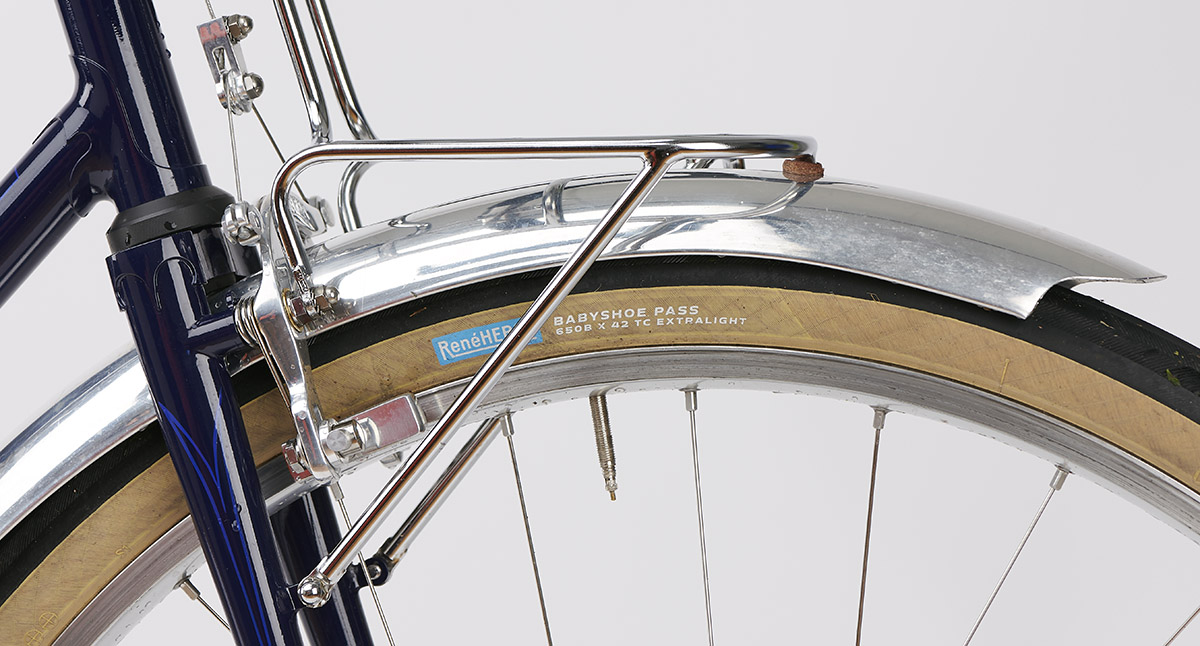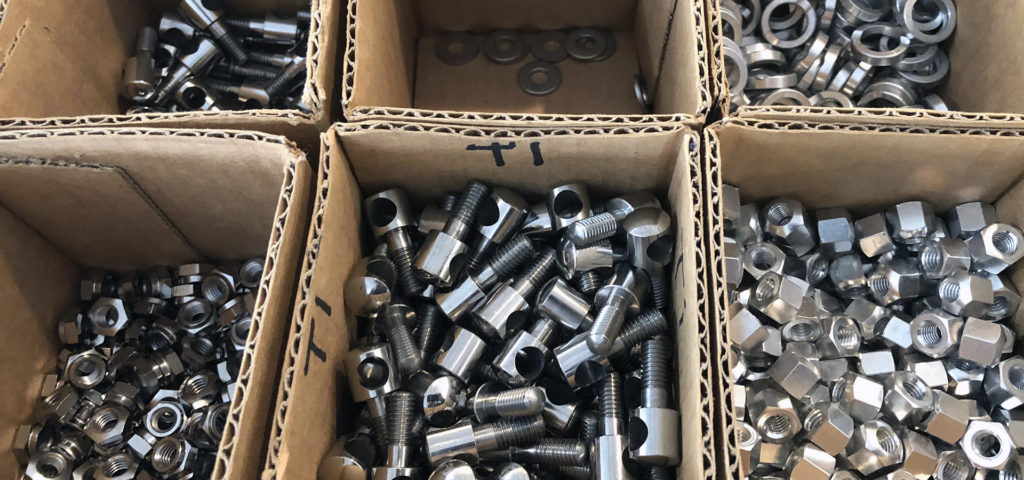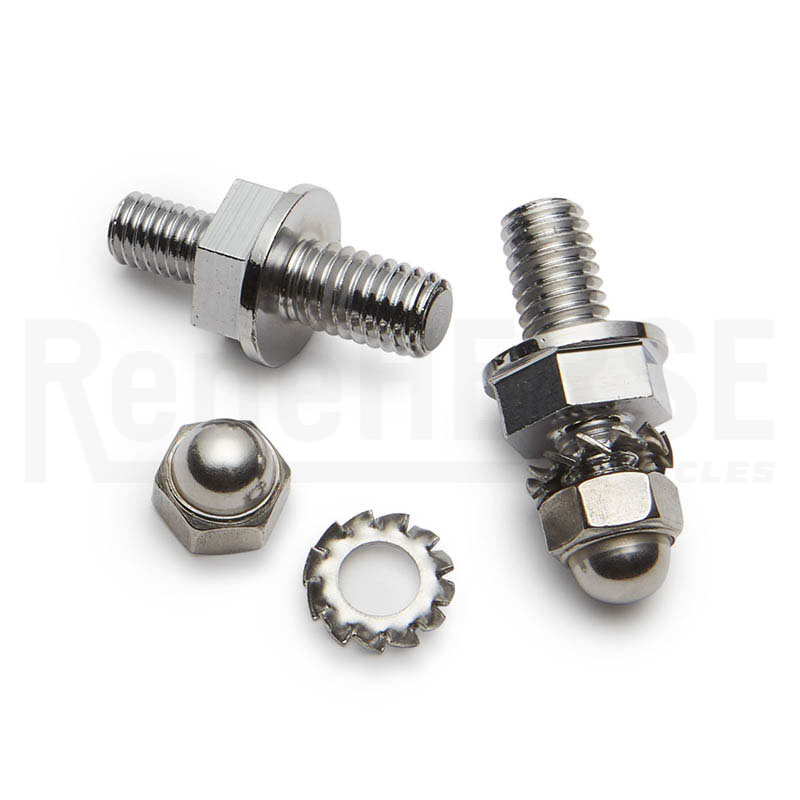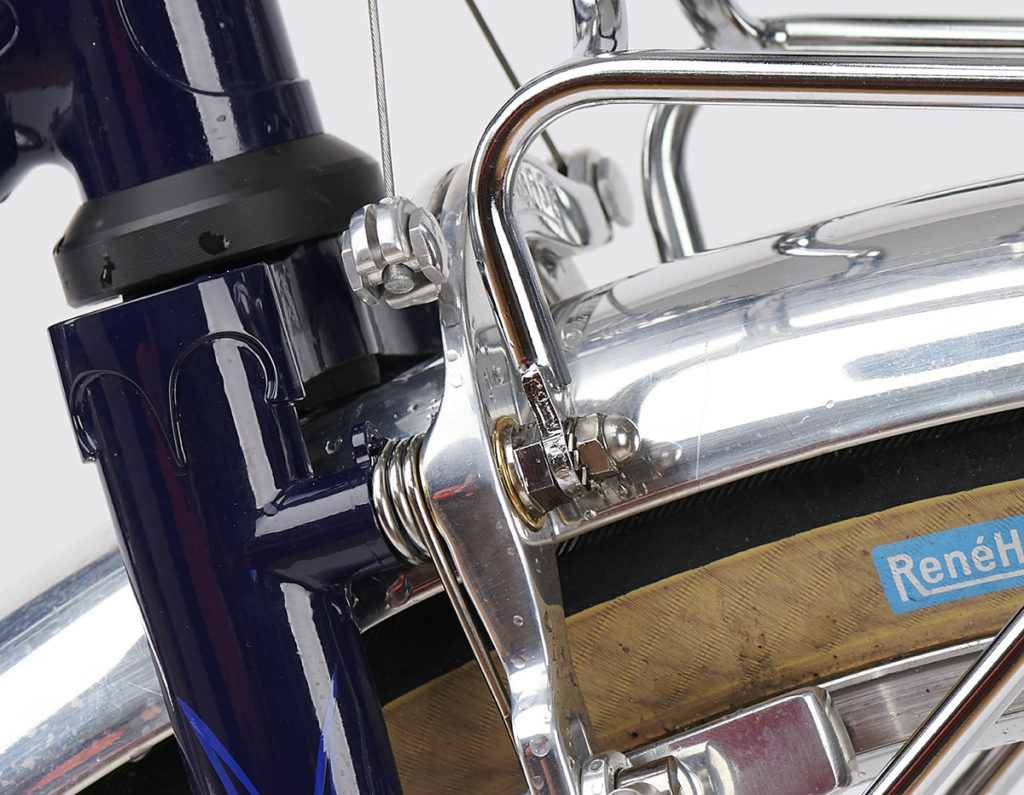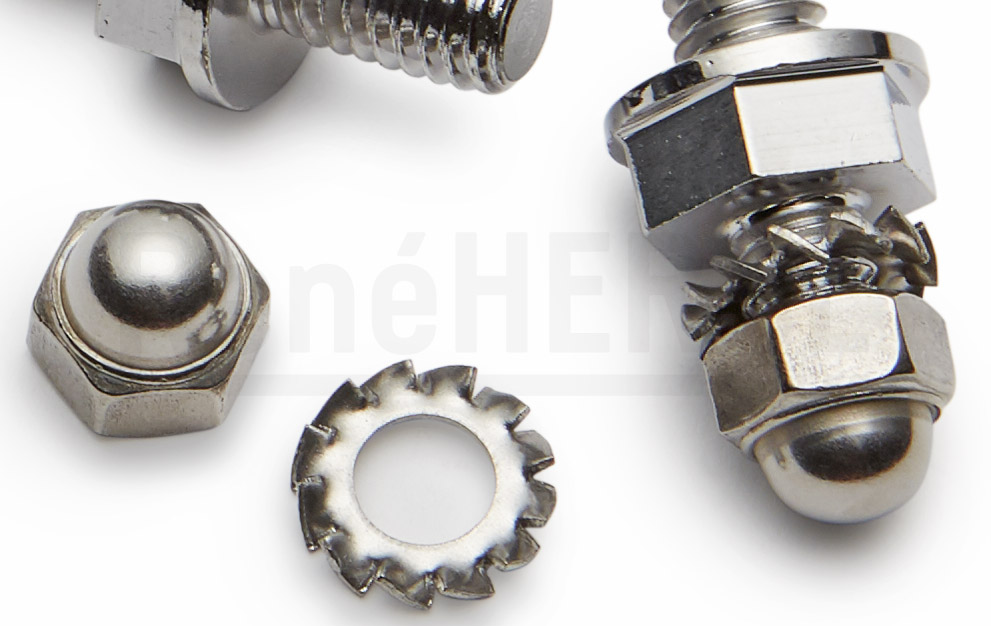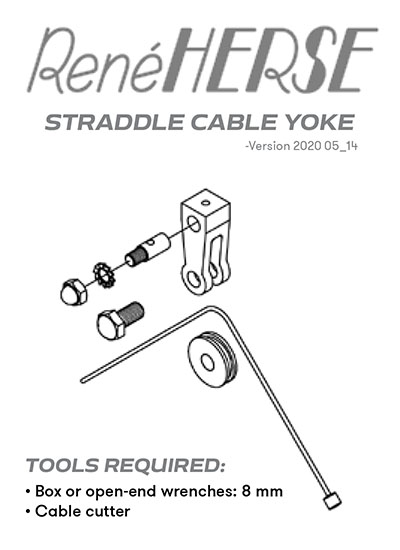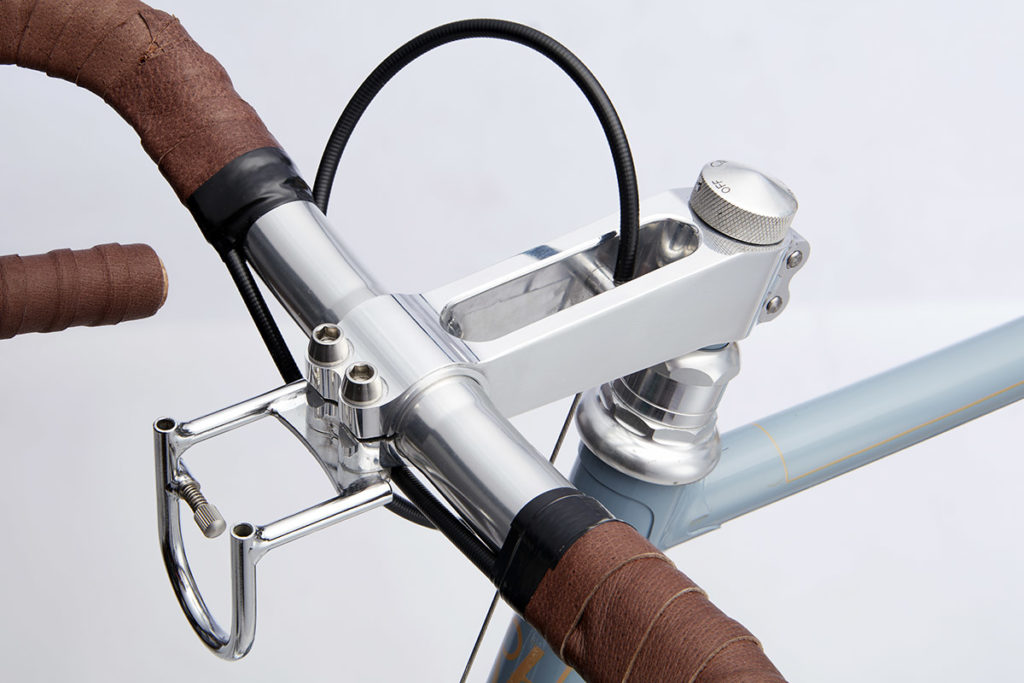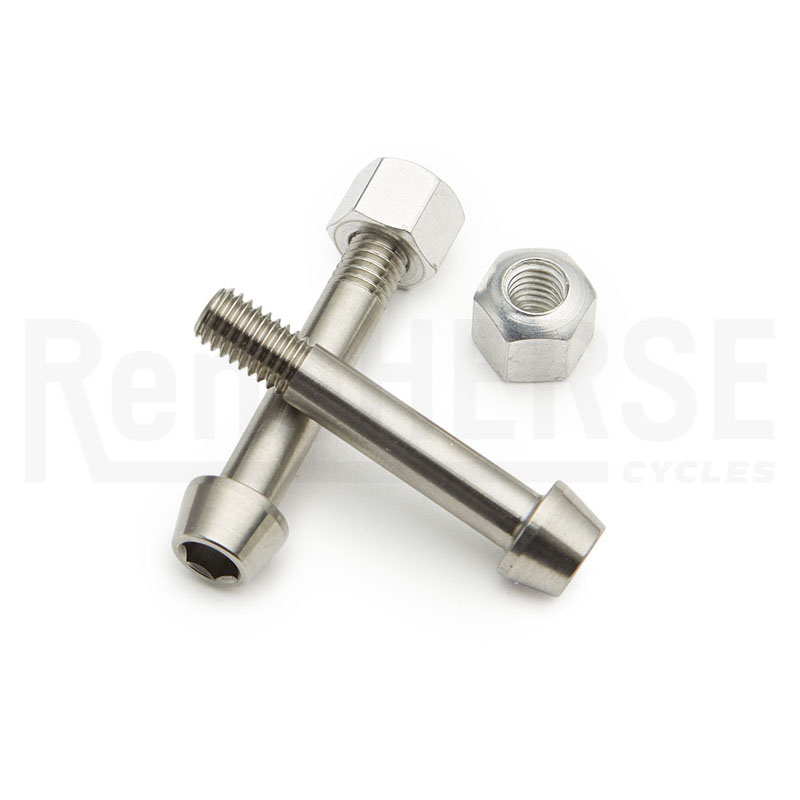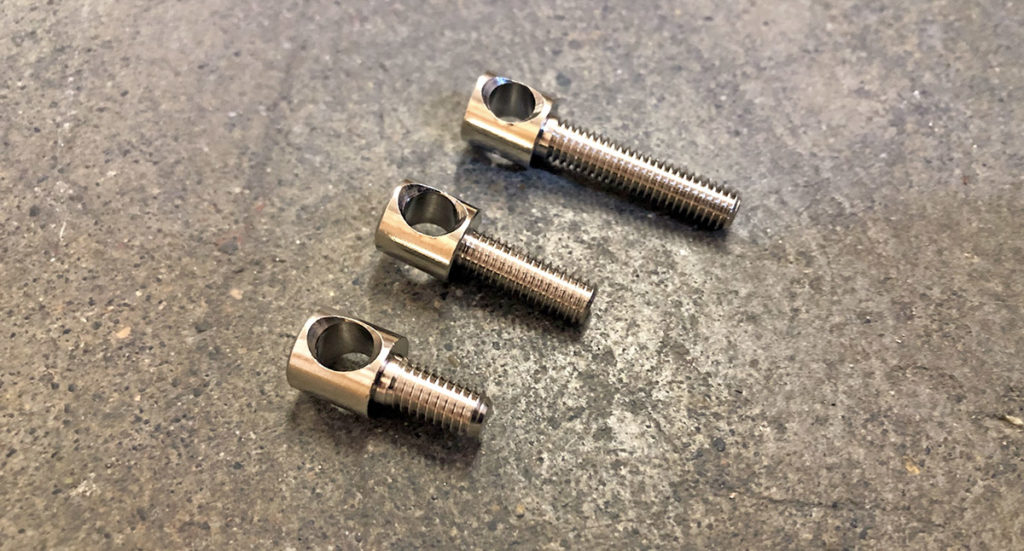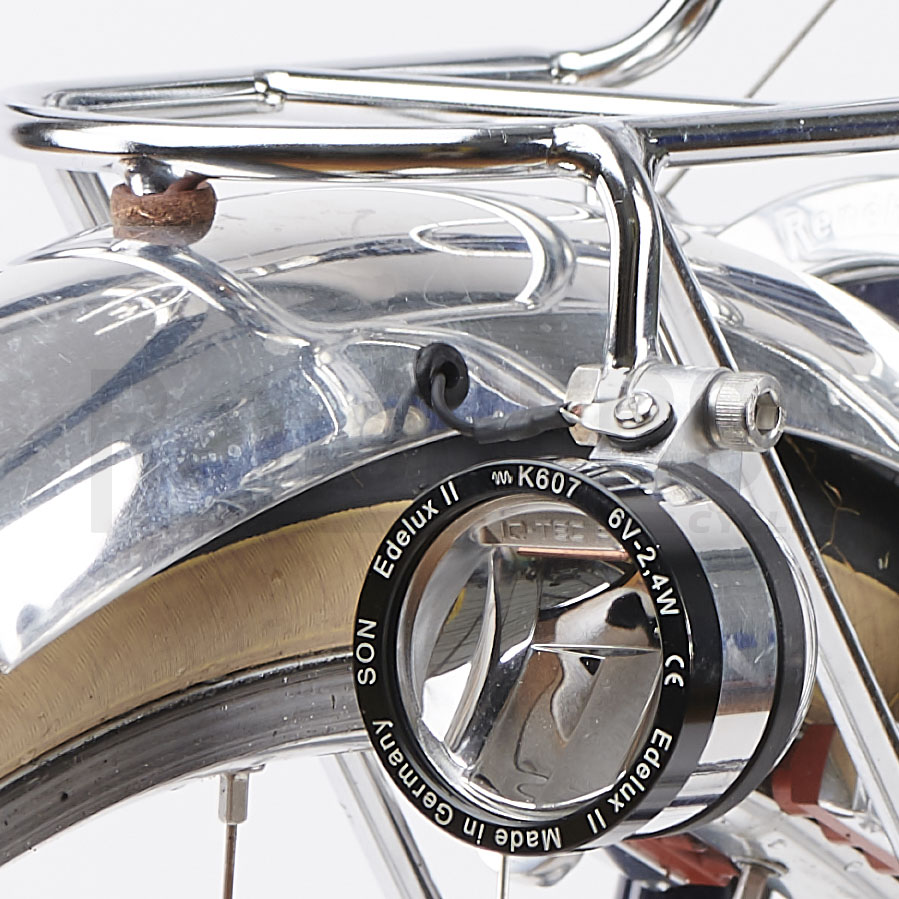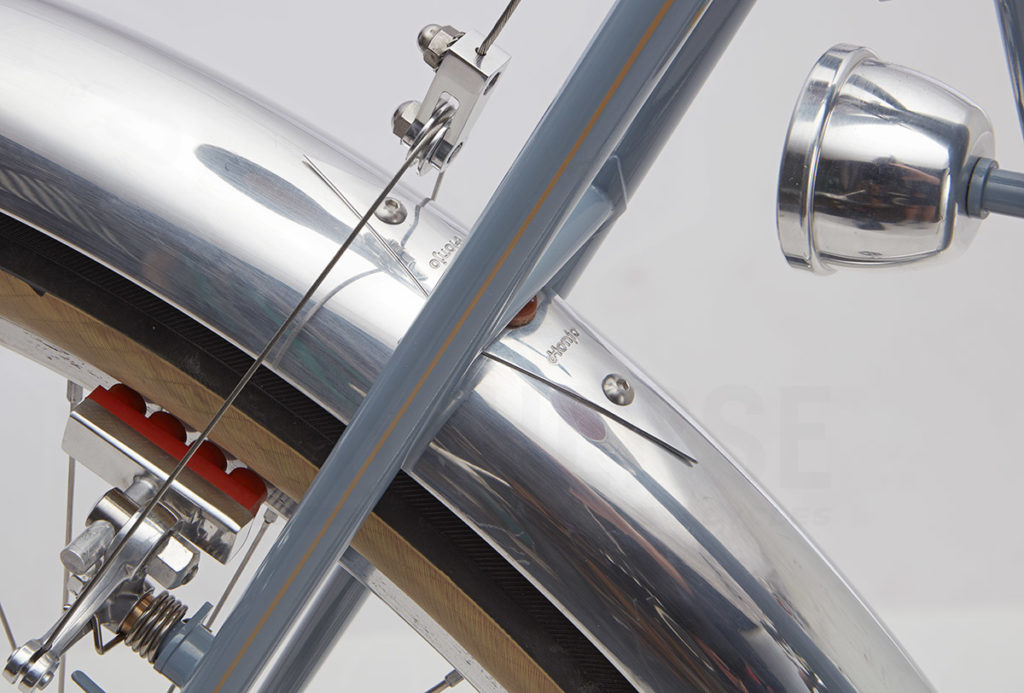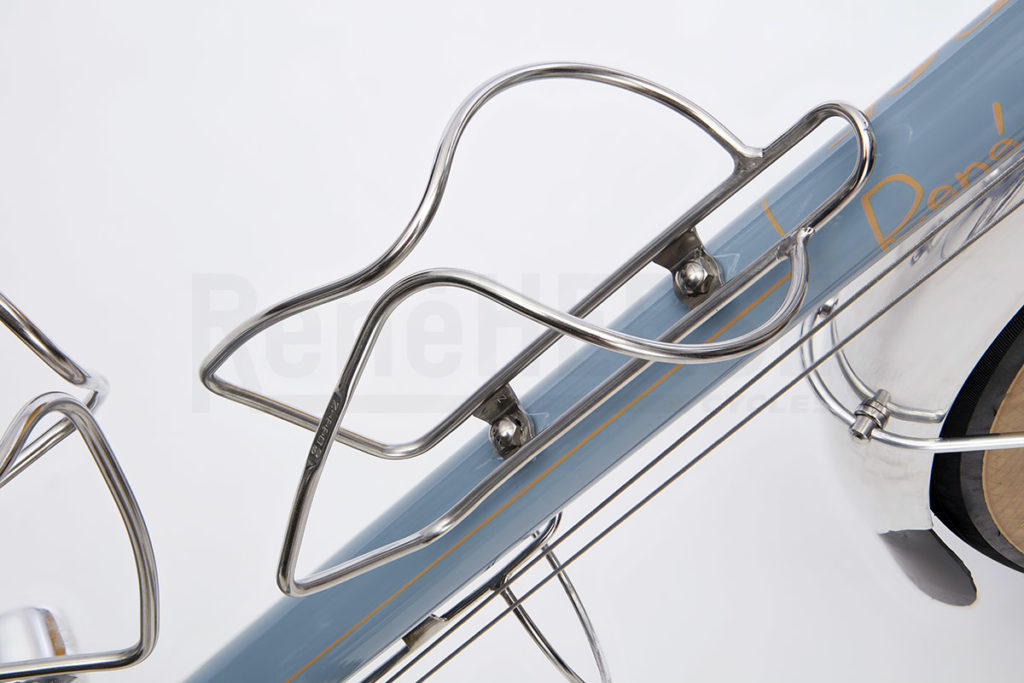Why we’re excited about bolts
Some readers were surprised by the light weight of my Oregon Outback bike: 10.3 kg (22.7 lb) with lights, rack and all those parts that usually are left off when a bike is weighed: pedals, bottle cages, pump, etc. Others wondered how our bikes can withstand these challenging rides without anything rattling loose. In fact, after two Oregon Outback rides and countless miles in the Cascades, I’ve yet to tighten a bolt on the bike. (I checked them all before the FKT ride, but none needed tightening.) Key to light weight and reliability are the most mundane parts of a bike: bolts, nuts and washers.
I’m not expecting all our readers to get excited about bolts – fortunately you don’t need to. We’re sweating the details so you don’t have to!
If you wonder what goes into our bolts, here’s the story: For our Rene Herse components, we manufacture more than 80 custom bolts, nuts, washers and related small parts. (We also stock another 50 or so that are standard items.) Our bolts are made in four countries on three continents (U.S., Japan, Taiwan, Germany), each by the manufacturer best equipped to make them. In the photo above, you see thirteen different types of our custom fasteners. Making custom bolts is expensive, and keeping more than 130 different small parts in stock can be a bit of a nightmare. So why do we do it?
We could design our components around standard fasteners, but performance would be compromised. So we make our own bolts, nuts and washers, each specifically designed for its purpose.
One of the most clever bolt was developed by René Herse more than half a century ago. The rack mounting bolt is for attaching a rack strut to a brake pivot. Rather than sandwich rack and brake on the same bolt – which almost inevitably has the bolt come loose when you repeatedly brake hard – Herse developed a bolt with a forward extension.
First you mount the brake the standard way, then you attach the rack to the forward extension. That way, there’s no risk of the bolt coming loose. And since the rack bolt doesn’t need to be tightened as much as the brake bolt, it can be thinner – which saves weight not only on the bolt, but also the rack that matches it. While he was at it, Herse incorporated the washer into the brake bolt, so there’s one less surface where vibrations can cause the bolt to loosen. It’s pure genius. We’ve put Herse’s original bolts back in production. What’s changed is that the threads are now rolled, rather than cut, which makes the bolts even stronger.
We also changed the nuts. René Herse used domed nuts, which are much nicer in this application than open-ended nuts. The problem with domed nuts is that if your bolt is too long, it will bottom out against the top of the dome. Then the bolt feels tight, but isn’t. It’s not a problem on Herse bikes, where the bolts are just the right length. But not all users can be trusted to get their bolt lengths ‘just right,’ so modern domed nuts are taller, with more room inside for a bolt that may be too long. (Basically, this gives you a little more margin for error.) But the tall nuts don’t look nice at all!
In Japan, we found a supplier for shorter nuts that have an ingenious pop-off feature. In this enlarged photo, you can see the groove where the dome meets the nut itself. It’s designed to break there under high stress. If the nut bottoms out, the dome simply pops off, and you’re left with a standard open-ended nut. There’s no risk ever that your bolt bottoms out against the top of the dome, yet the short nut looks as nice as those mid-century nuts that didn’t have the safety feature.
With nuts and bolts, it’s important to use the right materials for each application. High-strength bolts, like the cable anchors of our straddle cable yokes (top bolt) are made from Cromoly steel and chrome-plated for durability. Having a super-strong bolt means you can tighten it sufficiently, and you’ll never have to worry about your brake cable slipping.
Stainless steel is too brittle for high-strength applications, so we use it only in places where ultimate strength isn’t needed. The nut and lockwasher for the cable anchor are made from stainless steel. (The nut has the ‘pop-off’ feature described above – it’s easy to see why bottoming out the nut would be dangerous in this application: The brake cable wouldn’t be locked tight.)
The lower bolt of the straddle yoke serves as a pivot for the roller. It’s supported on both sides, so it doesn’t need to be very strong. That’s why we make it from titanium to save weight. (Titanium is a bit more expensive, so we also offer a steel option for those who don’t need the last bit of weight savings.)
There’s an entire science around bolts. We analyze the stresses on each bolt to make sure it is optimized for the intended purpose. For example, you can make stem bolts 5 mm in diameter. That’s strong enough to clamp the handlebars. But it’s not enough to hold a decaleur bag-support securely, since the decaleur tries to bend the bolt.
A 6 mm bolt is much stiffer – so stiff that we can make it out of titanium. That way, it weighs the same as a smaller steel bolt. To reduce the bending even more, the threads start only below the decaleur – so all bending loads are taken by the full-diameter shaft. The nuts are made from aluminum. We made them a little thicker, so the load is spread over more threads, and the nuts won’t strip even when you tighten them for the 100th time. These are small details, but they all contribute to the light weight and high performance of our components.
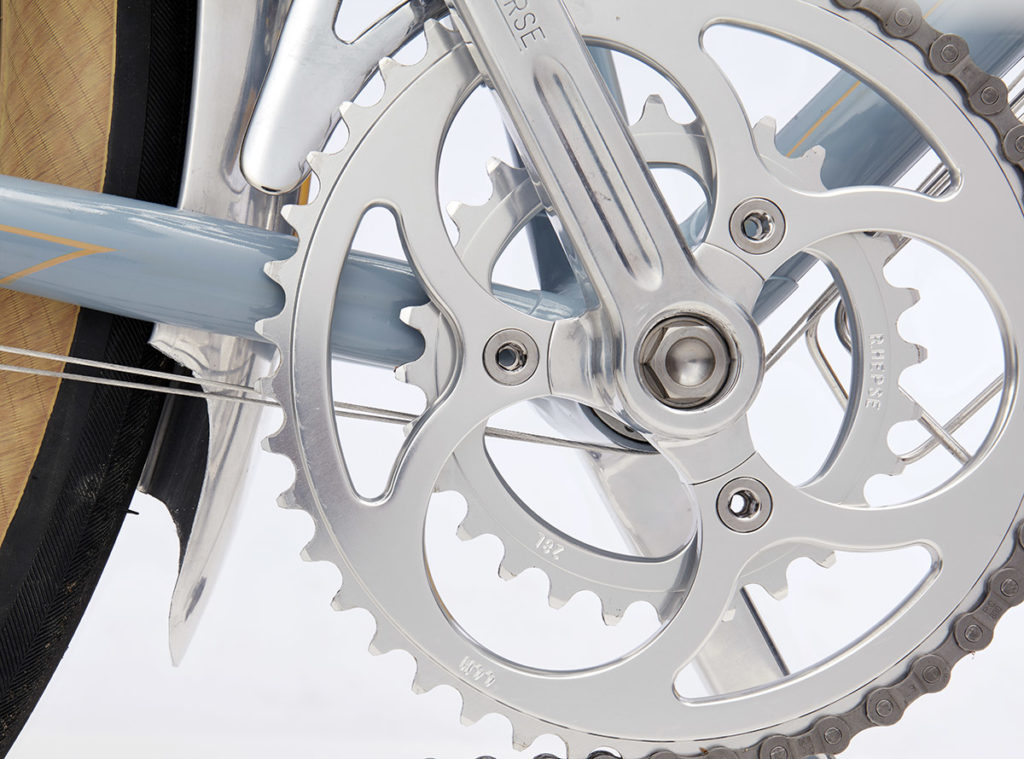
Another great application for titanium are crank bolts. You need a lot of force to seat a square taper crank, but then it stays on almost by itself. That why you want to use our steel bolts to install your cranks. Once the cranks are seated, you can replace the crank bolts with superlight titanium bolts. Our ti crank bolts have a recess in the center to save a little more weight without giving up strength. (Peter Weigle came up with the idea when he built the superlight Concours de Machines bike.) By choosing the right grade of titanium, we’ve made sure our ti bolts are strong enough to tighten the crank if it ever comes loose on a ride. (Which it won’t, but still…)
Sometimes we make a custom bolt just because it looks nicer – like our chainring bolt. Most chainrings are 3 mm thick. Standard chainring bolts are domed so they don’t sit above the surface of the ring. Rene Herse chainrings are 4 mm thick for extra stiffness – which allows us to use just three arms on our crank spiders. To match the thicker rings, we made a flat chainring bolt that sits flush with the outer surface of the chainring. It’s a small detail, and we won’t pretend that it somehow improves aerodynamics or provides other functional benefits. It just looks better.
The newest addition to our ‘bolt program’ is a 32 mm long fork crown Daruma (top in the photo above). If you’ve ever tried to install metal fenders on a bike with a unicrown fork, you’ve needed this part, because the hole in the crown sits too high for the standard bolt (middle) to reach all the way down to the fender. Yes, you could use an L-bracket to attach your fender to the fork crown, but that’s much less stable than pulling the fender against the bottom of the crown with a Daruma. Extra-long Darumas were not available – because there simply isn’t much demand. There’s no money to be made supplying such a small, but rarely-needed, part at a reasonable cost. And yet we’ve heard from customers who needed an extra-long Daruma and couldn’t find one. (You can cut a bolt shorter, but adding length by welding on a piece is difficult.) So we talked to our friends at Honjo who supply our standard Darumas and commissioned a longer one.
We now offer the Darumas in three lengths. The 17 mm Daruma is for racing bikes with very short fork crowns. The 22 mm is for most all-road bikes. It’s the perfect length for our Rene Herse fork crown. We supply it with our Rene Herse fenders. And now we’ve got a 32 mm for when you need a longer one. We made it extra-long, so you can cut it to the length you need.
Another useful item that can be hard to find is the rubber grommet that protects your lighting wires where they enter the fender. The grommets are a standard part, but only sold in large quantities. You usually need just two or three for a bike. We now offer them in convenient 8-packs. We also supply leather washers that cushion the fender against ‘hard’ points like frame and rack. Ours are made in California from high-quality leather, so they’ll last as long as your bike.
Some bolts aren’t special, but they can be hard to find. Honjo fender reinforcements usually doesn’t come with bolts, but figuring out the correct length of the tiny M4 bolts isn’t easy without trial-and-error. And more likely than not, the length you need won’t be in stock at your local hardware store. If you use longer bolts, they’ll protrude into the fender, where they’ll catch debris that’s picked up by your wheels. That’s not ideal… So we just supply the correct bolts, nuts and washers with the fender reinforcements. It’s a small detail, but it can save our customers a lot of hassle.
You won’t lose our bolts on the road, since they are designed to stay tight, but it’s easy it is to misplace a bolt when you’re working on your bike. If this happens, don’t worry: We offer most of our bolts separately. That way, you can also use them in different applications. Our Rene Herse M5 titanium bolts are great for attaching bottle cages…
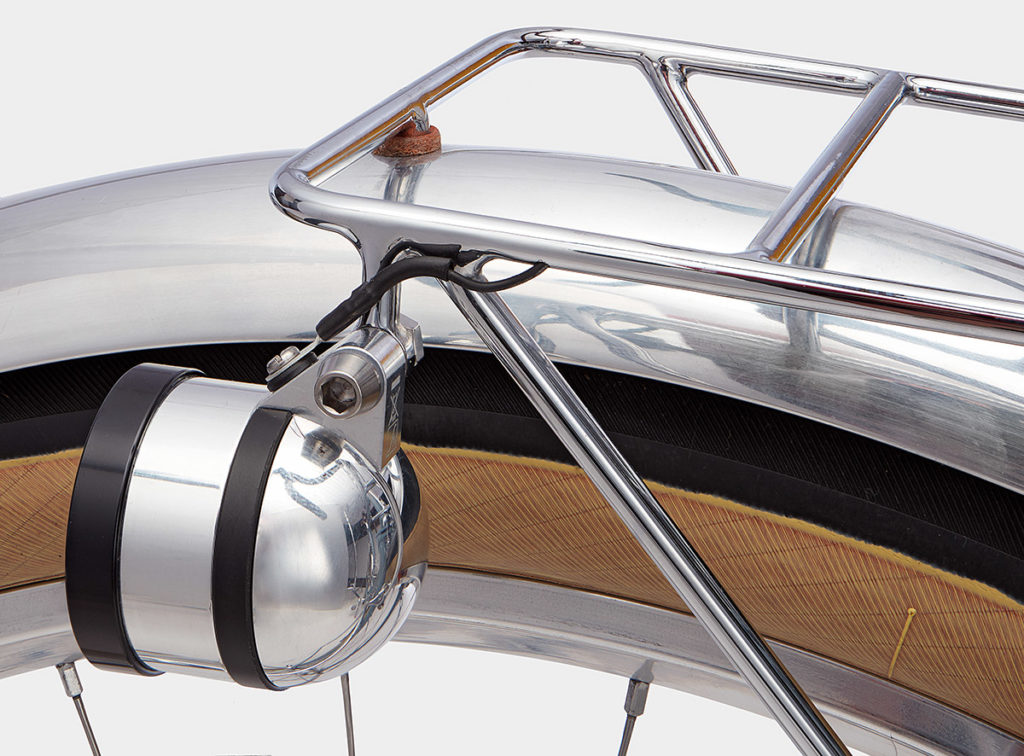
On my Oregon Outback bike, I used a titanium stem bolt to mount the light – together with our special washers that allow adjusting the beam angle without tools. You can be creative – just make sure you don’t use titanium bolts in highly stressed locations, such as for mounting racks.
These are just a few of the special bolts we make for our components. There’s a lot going on with bolts, and we spend a lot of time designing them so we (and you) don’t need to think about them when we’re out on a ride or adventure. Then we just enjoy the performance and reliability of our bikes.
Further reading:


